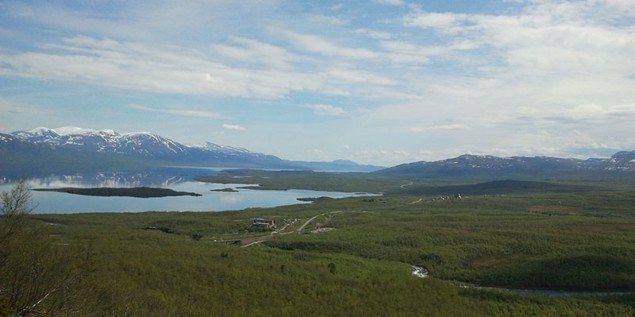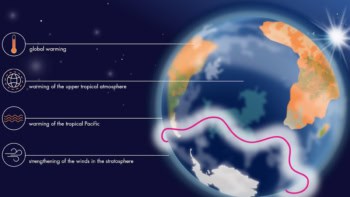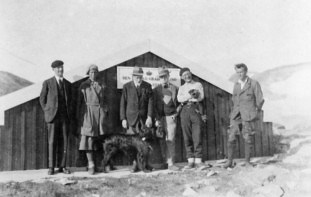
While small habitats may respond to climate change quickly, those on larger scales may delay their responses until they reach a tipping point. That’s one of the findings of a team studying a subarctic lake in northern Sweden.
The large Lake Torneträsk reacted differently to small lakes in its catchment area, Carsten Meyer-Jacob of Sweden’s Umeå University and his collaborators from the UK and Switzerland showed.
Although over the past 9500 years or so Torneträsk responded to climate warming in a similar way to its smaller cousins, when the climate cooled about 3400 years ago its response diverged. The small lakes reacted to this cooling very quickly, but initially Torneträsk showed almost no change.
Only when the Little Ice Age occurred in the last millennium did Torneträsk react. The Little Ice Age acted as a thermal tipping point, causing Torneträsk to exhibit an abrupt ecosystem response more than 2000 years later than the smaller lakes nearby.
The team also found that Torneträsk had an immediate and pronounced response to recent climate change, highlighting both the variability of potential responses to climate change and the magnitude of the ongoing climate upheaval in the Arctic.
To come up with their results, Meyer-Jacob and colleagues took cores of sediment from the bottom of Lake Torneträsk and the upstream Lake Abiskojaure. Different periods of deposition, characterized by different types of sediment, were visible in the core. Geochemical analysis provided information such as the degree of weathering of the incoming sediment, which depends on precipitation and vegetation cover. Looking at the amount of silica produced by aquatic algae, meanwhile, showed the productivity of the lake.
The results revealed the full history of the lakes since the last ice age. Initially a series of small lakes dammed by ice flows filled the basin. By roughly 6600 years ago glaciers had completely receded and the local area began to recover; lake sediments record the gradual build-up of soils and more complex plant communities.
The landscape continued to develop until around 750 years ago when the onset of the Little Ice Age brought temperatures close to 1°C below today’s. This cold period enhanced soil erosion in the area, radically changing the composition of the sediment entering the lake – even though more than 2000 years of steady cooling had had little measurable effect. This suggests either that the Little Ice Age caused extreme climatic changes, or that temperatures crossed a critical threshold with its onset.
Another major ecosystem change in Lake Torneträsk took place in the last century, with the return of the sediment composition to pre-Little Ice Age levels, indicating reduced soil erosion. This immediate response is due, the scientists believe, to ongoing climate warming that has seen local temperatures rise 2.5°C in the last 100 years. Their results demonstrate how ecosystems can respond to stimuli very differently at different scales, as well as how a relatively small increase in a stimulus can produce a large change.
Meyer-Jacob and his colleagues published their work in Palaeogeography, Palaeoclimatology, Palaeoecology.



